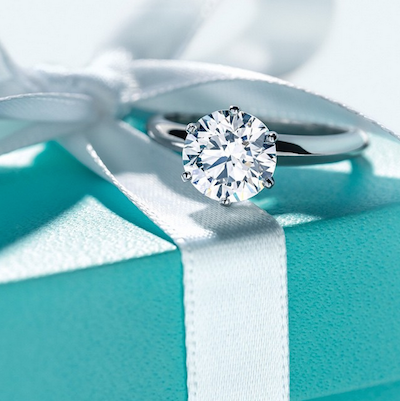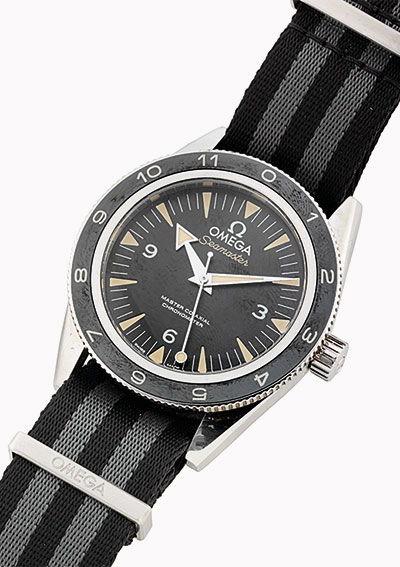Since L2 last assessed the watches and jewelry sector, luxury brands have begun to embrace various SEO/SEM strategies on the category level, having been virtually invisible on Google search results in the past.
L2’s “Watches & Jewelry 2016: Search Insights” report provides an overview of the sector’s luxury and premium players, uncovering how search strategy has evolved over time. Although watch and jewelry houses in the luxury space are taking different approaches to search, the majority are depending on organic and paid search leads using branded terms to drive Web site traffic.
“Luxury brands have taken a much more nuanced approach towards reaching their target customer,” said Elizabeth Elder, research associate at L2. “They don't want the customers who are shopping for lower-priced items so they are willing to sacrifice visibility on certain keywords in order to strategically align themselves with the right market.
“Search is where 60 percent of watch and jewelry brands' site traffic comes from,” she said. “Brands need to continue to invest in their SEO/SEM strategies to stay ahead and make sure they remain visible to the consumer.
For the Watches & Jewelry 2016: Search Insights Report L2 examined the search practices of 66 watch and jewelry brands from the luxury and premium category. L2 considered search engine marketing and search engine optimization as well as organic traffic for its research.
Call in the search party
In the past, luxury brands did not hold a strong presence on Google search results if consumers used unbranded keywords such as "timepiece" or "engagement ring." The exception to this finding was Tiffany & Co., who hovers between the use of branded and unbranded search terms and organic traffic.
When unbranded keywords were searched, they often yielded results for major department stores, gray market outlets and speciality retailers. While the results were on target, the search brought up accessible price points for mass market consumers such as Fossil, Zales and Jared.

Tiffany's iconic blue box with an engagement ring
L2’s report found that of the watchmakers evaluated, 90 percent of site traffic for these brands was generated from organic and paid search results. Propelling the search was the use of branded terms, such as the direct use of a watchmaker’s name.
This trend results in watch brands interacting with consumers that sought them out by name, meaning the consumer was in the latter stages of the purchase funnel. While this isn’t necessarily a negative, being able to capture the attention of a consumer during the exploration and discovery phase of the purchase funnel may move those unfamiliar with the watchmaker into a conversion.
A majority of well-established watch brands, including Breguet, Breitling, Omega and Ulysse Nardin, rely solely on organic traffic. Many other brands practice brand-oriented SEM, including Hublot and Rolex, and brand-optimized SEO, such as IWC Schaffhausen and Tag Heuer, strategies to segue consumers to its Web pages.

Omega Seamaster 300
For watchmakers, their low engagement through unbranded keywords forfeits market share to gray market sellers by default.
In comparison, jewelry brands’ share of organic search traffic via branded terms drops to 85 percent. For paid search traffic driven by branded terms the percentage drops further to 65 percent.
Given the crowdedness of the jewelry sector, brands work to differentiate themselves from direct competitors by actively bidding on unbranded terms that apply to the industry at large. These terms include charms, diamond, engagement rings and necklaces, among others.
Unbranded terms account for a third of total paid search traffic, and nearly half the total spend allocated to SEM strategy.
Likewise, there is a gap between the levels of SEM activity based on price point and target consumers. This has resulted in bifurcating performance between brands offering highly diversified collections and those specializing in engagement rings.
De Beers for instance, known especially for its engagement rings, relies heavily on unbranded terms at nearly 50 percent, and organic category-optimized SEO of close to 95 percent. Comparably, jewelers such as Boucheron and Graff Diamonds rely on 100 percent organic traffic only.

De Beers' Infinity Heart engagement ring
“Watch and jewelry shoppers are fundamentally different,” Ms. Elder said. “Watch brands rely on 90 percent branded keywords to drive their organic search traffic.
“Additionally, only one third of watch brands in our Index have ecommerce, which indicates that most of these consumers already have an idea of what they want in mind,” she said.
“Since the marketplace is more diverse for jewelry brands, we see a rise of brands playing with unbranded keywords.”
Overall, watch and jewelry brands rely on search for 60 percent of Web site traffic, and only 20 percent of consumers go directly to brand’s page. Interestingly, social networks only account for 3 percent of Web visits for the sector.
In terms of paid search, 49 percent of watchmakers use no such strategy, but the remaining 51 percent do, showing a strategic imbalance within the industry. L2 found that of the 51 percent who do pay for search, 24 percent use a mix of branded versus unbranded SEM and 27 percent rely on branded SEM.
The jewelry industry relies more heavily on purchased search traffic at 62 percent. This percentage is then broken down to be 55 percent mixed branded and unbranded SEM, and only 7 percent of just branded SEM. Thirty-eight percent of brands do not use paid search at all.
Searching demand
Understanding SEO and SEM patterns can assist brands in planning and placement of campaigns, and determining which products consumers are most interested in learning about and purchasing.
Using Google’s Keyword Planner tool, Karus found that Apple Watch received 60 million searches in 2015. While this number may seem high, given the disruptive nature of the Apple Watch, many consumers were interested in learning more about the smartwatch, but sales have said otherwise.
The most popular traditional watch brand was Rolex, although Apple Watch beat out the watchmaker by 42 million search prompts. But, Rolex had more than twice as many searches as the third place brand, Tag Heuer (see story).
In the jewelry sector, Cartier’s Love Bracelet is the most popular designer jewelry accessory for women, with 353,840 monthly searches on Google.
![cartier-love-bracelet-bangle-jewelry[4]](https://americanmarketer.com/wp-content/uploads/2014/10/cartier-love-bracelet-bangle-jewelry4.jpg)
Cartier's Love bracelet
According to research also by Karus Chains, while Cartier is only the fourth most-searched brand, its classic yet recently trendy fashion jewelry item is the most sought after online. Cartier’s Love Bracelet has been around since 1969, but it has recently received attention from a younger audience courtesy of some famous faces.
The number one most searched for women’s jewelry item is the engagement ring, with more than 14 million queries per month. Tiffany engagement rings in particular receive 86,630 searches a month, making them the most researched women’s ring (see story).
Unbranded terms used in search should not be considered unsuitable for luxury, often these keywords are beneficial and may be able to sway consumers from one brand to another.
“Unbranded terms are useful for brands looking to differentiate themselves or to launch in a new market,” Ms, Elder said.
“For example, a luxury consumer might have an idea for a type of ring she is looking for: a gold ring, maybe a Cartier Love ring,” she said.
“However, Piaget just released their newest Possessions collection. Piaget can bid on unbranded terms such as ‘gold’ and ‘ring’ to help promote its new collection and drive that shopper away from Cartier to Piaget.”
{"ct":"AhL4zmb+iIxF1\/HQ2hKjdyzEgquIqH7gPfNYVEfVwnvOWl6avKd1gkRtP4i6TT7NihoBzCjqCcZZ096K+WyevmS\/E3VCHpTw\/vk3R6Y8hZoLp2oJy11TFmOYv6NKtuc0N9E0e\/Ke8h00\/2xD+UFMpAq56fCBl1ZWc1DFFI9AoyuaJWRzWVDcyZc+iP1GQWxc0MY37ZU3owyco7q02gV\/3umxf3dCaFXjAmHsxYJa6Dqg\/gQpQIH19Wddx5wPG\/91nLegqy6vWt5Qix6SryZ6CCqz4EQQuUtC8WAcFNGhTUOqk5Xgg4a36VJYwQvv4lBiGQAUJrETaWCzyM72w+mb7AzqCWYECM6CeyyTsdtXhdmqPQdN0UadHfTvSJxWbzehZCMBDTjYOUEln7EDg2OCGWJ+Pd3fwl8QJoQSjegh2pbipmm679HNsd1BDs6J737gufTIAX6+oEQsUpt6MzlWnDl4oFA2PcoDevx27Lt3NcTL6BhCQNotKu5QI7Af7DYuyl9tleqbFoZwrZJQvBHwhVWJK9\/HrOm6kSyR\/0quLz74oVhKFhDiq41TIPu6KI\/TbEggXt9WdnGxsQYERLEde80ulztiyLZc0DSbI2cbDe2tX+wGz9CR6tOmqj3xQkBI4Aq6tEZDIE0Mg6IYOJ8L6k+C0zTBP+zSoEINoRfThPBde5txfizL1+fMyCHSiUIBGHf\/1BeeZRMyFpLES3FzNGDnI2fOhTBpHEqooSR1abD1rfOWHIerInLf0b+DkuWFmjE+DV7rr\/upSW3WJ8h7btXg\/Qluazvbi5rid4NrDMFuJGUTSQdC9ZNM11O9JFWzdEUrqv+AHW17FsDzHC7srUi41TcvqSmlCp6hVUHZqB1ktEyrGVMLXJMoEebjqqLRSwjB0iY7YIrvB7Hs0Pa\/4LEFMYZHrwOLWg7LY65EjqHWk2pEvK1jbFGPseKjFqY5qwv+a6Xb4SaNx8QoX\/4MtsyU8mIE7fPuPUU4ru76ZsjqdF4WmgFfXIanVKVI5JofO6gAK36I0RejSOC5\/Ejz1V6gk8lIkdWJ17P7X0KmWsYi0hakSfpK3QE9PeH6SYcSZVGbmQAxuek0FQSaG3H8lk5juu6iei+do+ONyZpDVKtGFzaLtcH+Jqqx8YotsqVmwPwvGkPx2aMLh7VxAuJlSdlKlJqh3A0MgSAB8Ia8DDytf6bVO7uzDIFw7WhYuSjmykUfCn0ogTVZaBBmUajv5UMJeRn\/eRjhciup+z0fI+UM5Zpu1Slo+5n9mz9PFDqCDIVEbSdw\/I4ezHbmyOHZrUq8ZSQ9MncuL7zgm02EbQg60IPCVBPTvnpBplg1Xcey\/4tTa7u3X1xq7lPrfQ8Ga5OUiZoOfyBq47OfoBdQ+2XvKuMlVuAJe9KB8BPAtm0vIbfsEmCbaqPFl6wA\/RrJbOEdvEIZVD5l6PBeRDhKVBLhyGY5X0g9uj6OEFTZBPXorDjH02BzaqZdvdOro2qHMbGNsQ+ErJU0gRoaHxEE1xR7vhToFVm3GZOFNv+B2wc1X\/l+pcKNvAJy6TZZ\/EH9U73SZmXlq9Szyp4KMNNBpIUJZc349IQz9U1z2CToM8GuVwEwLTZzw5yVRY4l51F7AJYcyZNwFhvvd4fer\/yqpbVKnca8OkbcPVETEmZnV3smcU0kCp3y55xf5OPJOxnlNU12nEDxRX3QmW\/qdPgE+K0A8Hy15BXiVrsFBvHNFq8A3tg7pFxfFT6bylPXvVjqmGo\/7aHrJRb09l1h6kPz8mO2t03KREXC724eRE\/ug+JV+4PYPedeQk8GKvgjYh0hUefg1\/8tdRDDT7037E+KLt+lwcd\/Uu1gd5cL99jeeSx81gR3Q9tPVScDbGCMi0O4Lh+ep4qGzJZ0l6DivGqiBwQTsDFj+EWh0Ec2tBU0NOfvZpEEafcmc9PTiIDzKHMPramd+IKMybbQCUKjoSzEQd1\/bsGv6T40S57t5mdCkWTjZrAKZkldbJ9leugQyefu6rPNU9TU3zjNkNIaqdKEOsaMgntc1ocw9L3mlABtS65iIWjK8EJYR4l\/qkJ\/RD2ymms1SSjPb8muEHvSYkO3UY74oZAssMUSgSfxCjuSGR5cUM83A14+YX96CyL3vIDJNBGtxeRAmMYVU7zWYziI5WNPrtplMVkXV3lrFzH0q8Om6\/LYJeuJ8VSBWVlimVaTlvSiHGBA3bbFSzRAa4dYUOAnNozKmKUOtVBp25F8Jjh5XpREAaDiLsx2gG568gIa7NokqZnG4SaM7y3F\/ZwUSR3gqzQ9eU\/y21OMgikTAIPhOObgZ8Q415czQqAqc3E\/lFKGNM0lHHJV\/U4\/rwsS\/PW+57PI21IZY75bPjv49z23Jk2xyHfwYe\/PfzAr850Oj\/0FwhKo+ys1a40i5B0uw5KJfk5cHxHSc7CXu5cV0Gp4ndSRhDVJpmZ0d4k5wjDySUZ8uz7onXu7XZVw8LfH2c\/n5LA1asb7Q49Cv8z736iPJ0x776bGlPejf4xOqC2pUjDLYU\/Nsxsu+KStzyVmaeK+sB9dx\/Sqw2GzKS5hZgLI6rdq\/JV8PoregsdDSwcKuo81EIiwBDcmug4PoMosrV5Vw6ic1oCTq2g3wTFYLyuz2eqaPvpDhdtiA0\/LlsI+jnGZi8frF10jKo8lTYwYZJSUvHv4JCCFk7hmYfhUOb4FoOZlEsd1Rg6bbkhnOQYzHVnRyJM4I9pDtLGgBDabpC3Bk5woBtRHYvlGa\/i0ZvisijjUXVFl2rpeao+84zyaOz0Z\/eDfBXFD5JL88cWu8mU3KRRZcGbXArRNI+kT3LavSMLVDumxjG6aKXj726\/vvcULzVkX3xunRuakFzEsyfqZrfoTEwzzggBIwO\/R5TgAEgtHG\/P7H8Y8FRlmx0a8d3T3EU5RQ4LuqDjlwQKjbP8eOli+YvhFjhUR70kzcul56IvsagLSiZnmDTnPao0WRr5Acj+\/Rji4XrSo7uP5hFJqPjbyYj7\/eWB5v1EUIDzSftmCYsuwpm2rZlMu2eI9ejDJcRCEAS81bxs17M5gZVgRrlF99wlH7RpKEDYVZcWBI+C\/xLKdQLsKE1A5pnWrBV65R7x6bldjFbuM0absoI9qeVZqeZcXJRmTkTWTGCtWPUxHeu\/2OPJdvstdrXTeLtC0b0B4R755ALyavXreCX3rXkRC9RE4xZt3FnfV15Fgpu9kRVBcIX43NNWcWEi4440BaTjh0Xd0Z6zHdt34i74gvLXlCr0nFliN+dUACuP9\/vWxzVpuSGxLDVM0P7kZQaHYhjrgmXIxYq1s2YhC9\/E2xPC238yFKihfAe2Dgp2aUfqqtHUhAfQNX8A6UeKHHZ+ZHg0HPzzO6zl80JL8kI2h0ugSC3QqjBUjdq1B7rGJ+vzRVl16C8d39NtSO4ALdXCSqbZZuBHMyGg2+S6FYM\/ZGpmnV+WXVpPOg+BSnvWTBukZPL1FiuEtWlx5wkY0tF6LFJvfVTYtXkyuubp1SMENzvP2mCLAlluGBfNJV+9bZ45g3NG6JlGegbdT9KK0KoRTQmrPcYrMaelR4pBKeuWskurFAB3RptvcZiyYkTnQq\/hLXngaCSMvsGGVwiS4BWwuTV54rAOTsEieZ81wUit1X29Oo8DUwiP2oxs7DldeGiDc1bb1O0UE6gJa2haSihYfoOvwFWlg+xbIwCJ9By7vfzButPm3lYitCGrzFItgDAu6VWuXQBc+pgtEqre9++07pZONvVSjlcLL9mSzkBg25j4uhHgrMaTSMRJJizei3SHTLy5Jt05ANj1TdnkFO8OiwVN9twe1VZoOem2j+nd55fuspbTd8ipKWrKm36F807qe4q6ve2w+AJ7In1HAUxRWonm8wW6+DRAxMOZPfCA\/kcZyWnLm8Qhvz6NgLcgOlR1QyhFNo7f6iTAmjvQJrmuEBHoLVtKrh1LLHKj3N39EYOllr\/xusnMrjqM2lkoJtT42DrzkJ9Do6nlA+q36e61CDWDRNdsLK5L8yZYaWOT4+NLC2nu9YY5vR6fxwSsAMcVmQXhX+tixYjPan7ilKRRzXIyi1MOc9694MCqSB8wZk7NYE5N152bSkGbfVpISllO1KbabmH9kon8r2Sb8XKl+bbKR2s58UsvMQCAK68X9DYf1slwYTS\/lyxiN+\/\/AmYP7ohaYUwP3UeDP199agkglwIMFtkoGKmER7cSpL+kr2B+8T+svSh\/NlgL60CEddeJDIOgSqUXT2RRIClN1a1zNRaGk8Gib213hy\/MWCCPgc9A4katAVPJ5DjzlbabaBM0xJel\/tVKteExsYPR\/zXD2HqdEqwJbfZh8aHaurwk4guU3a7SeilEHdCi2edLTNry1gsGF4HKhOqSUQvzwX3I1DIBx70\/JYgm0Bla3NiCaPQkIICVGm1A6qV7eZhUXnkngWzR80Qzrl16FqLBcAd1C+484S1MdITl53sRTNQDwLpEdSFWhiX0Vdl7DuwU0NrPU2aCk56tKLhH3O2QIXGwY6CzyV0YAez5aHEdX9\/BLKMnM977G\/F7L83ePGLoHEk5YAtR9CYK0Z2C+IGAKm66RXStI6t6w\/CPLE\/gGTB+P0q5kqmqlRJi8s+f3PluElzyV+6ieavta\/20TncJQzIYB9XQGZf5nMXfPatxrM5a1X20SlO2xzuhDzKwq\/ElNSW9UZputAhl0NQQ6rp\/WoNLXsBeGE+zuMl+Z9O3x8BrqbQqnCNBOOv+M2bvu\/sZGEM7PJN6hVqRCrHcQoJL1LoSf+2S\/WgCy7IbyTkDlL2dDtUpRGrOi+PYvtyK9ezR9hLmiPCrYy309v+oODK8IJ4yV5FIMs5wyFywkPvx2FNhSnVJNK3c+RWYnvtqMXRuSNGAlM6n3\/7LWaMLFxvsIGfZv4PQ0RNxjv736qEaueVYdm78oOlO5EVvHyw\/CMkHh0fKLKaGcilEjMAH1+l78xDbZaZnCBQaQVg5gQTqIU2+qynMCGOYOSOmEc71\/aF5MHQFqgdh2upiP65YFf6jD1A4FONiMWkV67ecGko7MBwiX8Vkat6nGrakcXPs8FchA6ssapjZfzIcD9F\/PdmHiKEkKzxh2X71q3RGToNquCi\/TGQ7nizcDAfsWnGcF2H3reSh2bdyzV3o6wNnGZKgxmATJTwYdTOj8LEB4nUmYdQWRl8y\/64hlS2f7gsq27p2yPXieMWZhgkm6\/Su13CT07R0AiCIMSAo4odNQYXZJ2U9FOa\/xKX4vMgLUOO5l+maF54vlVOkaD5jvQOgtB8j7W1808Tsq4Isy7smA5uwHp5I9907rCAhFls6HsdACkh9vTEzVGwRXirs9aRRVN0CfBBaohg\/c1tugEotpeD7oo4+ZxNvJhY+muUFa9Pcj+3xDCu682l6m40NGprCqe7K\/OvTQkP\/JzfyjRQIFORAPi\/DOVN7\/oT2hAprMqgQxdXPN10Rv3OIyeXMSLHm7EZDI5UP5ULTkN9Y1tU3TwuMDolyorCHQufg2qysmuz9gFeBm\/QuSYGe1AkwtnNnN4EjzwOCC1CFeD4TrfuSTkoT9dd6jMt8pghAwyXYEXt6ljKYgrjIEtzr9Eu2LMXye9Npt95XKcVKbuBANv+YtI0HPmlo9FU9bcUWhTlu1CTw2T689FT+hNUzrAKV7vuvtKMpDYAx5x+R98CO7HGHV0xznf1y1AceVmHTadcuEByuMeeLp4679kJ17h9sUreyL6aX+HSzES5OeXG4h\/CT0ziIvTI6lNkkpphivW4tHnqPFdlvF+YaCggRSSHwZyXHKNPkJWrFq\/glhXjFP570ZfRKwpIWgBNzva4Z8JCJFAyePbU8QgJf\/\/qvY3HXHcILqsawACTEOpBV0W8DTwwQGLtBUOGi7C995i0dt3m1H07s5bPbNWE+WpT28BFwlw7II4hxBiI+jTLh1ZH7cLC2xP\/F0ER1lrBN\/SyJ8IO+sfuixaKCgjqzqJ5RW61dbykYcNQbDGBUJMNPF8o2O5y2PlcBfRvMyLe5AHSUsCsh42Nx\/bnlJoXnt0+TTsbmMfiNrGvgVo3gelY6YCzzxI6Lrda4wuBtC\/RwvJnoYjDvjuaxOO2N81y0KGA9NS+IzV8nV8wu9yHKBPIPVYsTkgi6Hc+211TSiPGMKZyBldhaHZB5yHMiAG+6D18kQzSV7Z8mUt5q4A7PbGU5ie\/pMLAbi9E+z4I7cvmzu0O+2RFR0w+1nebCxFb3qk5mfpgX\/KqYyp6qd3W243oK8Qhrh5YKDKUSj45KAJju0WibvdWEHI3frg7H+3QvJzz+ZpT2ZTjVweSlBecsaZu4VYc6VguegaLSuiXvKiOlhWV73q0k5pABYDk0NUeqmnAMffXozNZRBe3EPTvk4FfxxZrGQtTO8tFN\/3h5UE4O1KDfkBBgC5dTCFcdXX48o15Oygtp6HuZrNThM1PiceD4hqXlsfv9j1ixSlCBwUukJ1VqsyKSRrCkOUPMLuXXsaZDut0m\/cQmUA4yrU+LS6+WW72PN5\/qfvUE5YP3ZTjJfnhINbtiM3rI9ORw\/FzRUjhUFVtiQXKl7\/\/QTx1Y\/AlQYI8JufSbuWp0On7rz000dU6fc5ziaMn+01FNW\/EnPurY2LMQMAKJcXW5uhGiOBf1GX6ctR888vK9v+iXcsygDGdFeY7fCEAQ0E24cfuJC28eWfVbOLthoaNFlgKsdVkCf+mgfoE+LisUT5jUtYFGHLcsFnpTOQ2d4lk88s0QGH40OutTXtBtfQGslnfZHDlgKWB\/roJg4U5NT2\/RhoRaof0nBkgoTvoPmb2MXzhgEq35bSyhWYh7Gl\/orpc76wXBgdSedlHguTnOnb93FPhVuwJJwX7cPuOs\/DKp9MPtQoNR6QrybdaDVAs52KV+WjcWAArcn2HpdKz7U15KLopnRYQTIGKlfSrkg2k7xui52Ng2XD+brlJGEzli5bhuwJWTeGx0+3S1NBgmXX2b3TtGDRqiG4nGJMhiT0QtQ5NWovaInDiUeHy9SmUByVBDgd+GnV7OCE29RFKg3K8nXBPX\/ej2aadrb4kIoCRvk5BoZqTqv\/PJD6T0VG0CjPchvh\/r8o1USQuBc0lMUbjtOM6IQSp5bnCIRGqFF4\/rRC8n5a6CbuIp\/5SfzlkrU18+CqBS+AhZv1zRLlb2Jsqd5CUt\/gca5vJpCDq3S2ArR+1UbSYeu++qQIO3Km\/bnr0nj3a1NcySfxo+O+UMQt9IVXO\/RCLN8o\/w2a31f1IhyzOlCSKjov856Is3XC6hhy5pH+Pn08Yff+RGGB18TL\/VzN5uKFDJjKIM+Z7Tg+nbJEeO6jZCCVAuoe7vDlLE78IJPkGkawZZq+2Qyb7TpY3WaxFK6nay0iWoc8R2sW\/daU\/oMWhtljFBKRORvnY\/hw8bejrzyGMLWyxTpUgo8U8noEPMCtKGzmOMsJeGLddDmGYVSDRgsxhHEdr31lEzbCUlJ65azoiufUml5\/6nt+h7g3quT1P4sQtQdUAEYmeE9ws2h7taXZ\/X3nSc5sgZolmKa+uebNXN9Y+3y6VjOnq8hGopqFvFFwUBgw6CwkYpyb0wD2FfVAoc8bhlr4061QaWcyZirpurHLKnfBcQe4ca+IsjML\/vGYPrG7PtKYehBToYJoID0kw8ht\/PcfNnTh+fbiOSnGD6o1YClgkdleQP6DPvWBmCIQCSa5r8NMXx9pxdg9aHphkmKBNzgW\/oNMvp\/+7hiunUP7k1l\/b+EQllhCVdeLUfmkg0DedkEnG6Ss9jnmyC65UhlbopLvJfZbs\/TOyc9IzDklbItCgZXXMh7xDXZ\/m53MmIBoQoGI3HbBamg8acXNTWoNZhFVKP9RpybHv65ObBvKVR9fArn108x\/wmzCyPbh9ofzO482ovaazu3B4xPRqQzKW5O5201wz6R31rEdMjihh74kdlaspdtm4xlPoz\/smxFYVw3K7OdvI8lURnp\/tcF60X3UPaib8\/T0W+BBsRKiCKgtjTAlfM8bkVJeTYQnsEIO4h\/E4WOQuikKutydqbtX2RuIZxDSfn57zSDtW3nBqaKNOWUqw6PgrUTfdhVD6eembJ9gtMzNev3npZVlhNeHXker\/vDc2U5aNEsNsi1AxpUkKO529pNWdoKpatq4r4oup5+axvUnNFFxQ9W+kX38OZZrccIEAE7XwPgutcxhkq9VGHpj7t3jpmf73zhVTTpQAY6OKlQ9tF1aCIwjUbHktp3ia6yP7XJEVnajSRVipBNokferMS64JyoCarS1ZBWHQOBpuJK6+QJVtdR5gkEiHjZouf8KH\/8xJOCnIuCP\/Pk7\/v8\/A+AgMmvGaMrw52YAaQz9vBu7NNjk5Xtkx\/YEMhl2IdOgIT1sC+diK9Z0+GiaTdLR\/QqtmhDTLlnA120bWlEMV6WEPGv0gg+cLili2bWEo1pPP7BN4R+iI\/TcU8xT9G42w4f3aj\/orc9o1lAld6DIVeikZWj5vnC68U0IWLsj0fyUe4QSV96RQkDmlFIHSI3ORZrcCMrxyuC+xUOnTzrB6gCHlkkx0\/PD+\/xTZNY5IHap7xkm3xcP\/QcJ0X9RYmbRvVRQCRsbcVEcm78+gfAksyGVNv1D8eHV86jGvQTrFK5zAmVwkdeEBWezgxlr11BcK8Qu2edNL8AdSKjXcfX3ODtySjZf7iZreByrqHTWXkHInYtuJzYdBsMSudHB3QFxNQs6jHWTy78VsYDaSelyXtth+8xEq7nzTszF11ZX4OXyOobc1nuj55zjNdFGUoan8GzJhK3008sUUgtG9rfMlipfDLrayT+D6\/KOhXIrobk8ql2c93a2gShYoLkdFpBunpvEbXryohaLaY6h5vPq6HoJnIT\/AUMYK9Zxd3Pr3OfuBuc5ahlDNWkmQE3eGvRmkXurl1Ng7MTPQJqovfZpaabZdjwzS9v4ly6wE7N7xz44oxtRwaDukwkEE9m\/ZyctgN\/iSTcpKzk8rWaneEPDhpbAibPvoWTUBNsHLk7k\/BMpyYJZ+xyaQD8wcwmTfgQDXuNrvCOkrhzpKiv8nzP1wyAaOMC7Ht\/wkzjvqiRIE\/wl5kWQxTPMj1nkLK6XtgvgIdsJVf\/jDKnrscYNOyh\/FWJQu\/xTdu1BEjAS3A4Zz7V51+xdkZY7G+wNGqvfHh4W6t3dLXnbho7eVAebfaWJi+kY2SJcCxJYet50q0F6uu0biHYZQ76HFP0Fg7PN3\/N3Qvu9BZ\/gtnC2503to1Av5A85Sj79Otx1amcDY5XFtwyFP8X0+FbZgTe4CBWX+3pIU2TTzqZeqZmpv\/DAUY5TghuixmIBHMS27eiEnfWCPALJXLLFAXQPEI2Mj3tX72gOc3WaovopkUOmfgAvin1ZtIfj4ydhl58XcoggtDdvDmJYb2M2TVySvlmNcnFH+yE9iK1cAiMbLn512FRaMLTxEqz15geDgaY1jDfxkeyaRfS1TAMkX05Z5PCfD0SzpCYj5XeeFqfAhO3bOATfQ6E451eOE95zoDpE8Bvbn\/mzWbfw9Fg\/m1iGsN1gH3fxdA3h5V7DcsdzWkF1rYhYFRJUWXiKDox4MFuJG9liVvTcoP+jOZ8g5T3\/n8N4eJK2V5cvd5Wqx\/\/PqNKoYGg7hOKpEect7kz2mXZy8\/KmpaKnyQGC8Bot+T9kopcd59KUrcLx3YLS8+\/sd5NxHsxafIhEvaK60hvR2o00RQRF8GnarSQt6no6CaUYMWCE2\/vP5HF2wgF7seDrgiubY+yb3fyx0THESLwZ9LobcJWbuHXAlrtwSBH5uNVb3d1hpRFQ5ierADHi4PNu6di0oELfhXGWG66iY7eG\/FVN0+6R7wS91\/h+dIqBU+1b8QhL6YjtwLfJAQNcCS6PQPnP6qOZ8SGSglXEpR06l\/8c3J0JBowGEwFfTWVrQAo+XXMg0LX8AL8mfINV2UH\/lWFsXG6hOC6Pz5d6b4zytRdFbyhRNvVRiwT01CYXm95KEU7Up44S7RKIH03FHWAcNjcKFAPgLhZCrytz6iG4Ay+IwKcDdDLiTY\/m9iuyVXp3iPovsZnu\/X\/4dr51l8gkPF0kXnIZ5d1xoeu02ZBb4Nnjvmhrs600DluAD+kyTP++CwQDzC27mTzo6FE1bZh6axzZJEYSz+34cAz4wZXZevt8ZmINf2fy0TDMUGcMtbiXwFvoc0GqwNzaeIEerpy0hi5fEpiDEOrqpjSruA\/IqFzbkUi9DdwfCQqNPXQ3OObUf2v50aTj2i32Pz9BRs++0ZSY2IJdjGIrwn5JWur0Um6vGVh6hcEAApKQvQaMU4Q0Z2JUYwEXrlAOyEUhStGERQiqt0uFj0bbHLqzR6pE2gZL1HxtxR1P+wR7a+5sSZ9WtZ\/KxVY9Ay2nAOjkbEBlMGNx1cFOMET6szTidfKowZc1z1+SArhwGPeHvLZrUc9r8\/jGvqnPnDKXz9rGQhErLdZMueicOxAA1Ii3eShXDAbobVjwwSH10trQLT2I14K0+VG9O+YCg7eu727oQ1yXmOK9l9pT1R03eqmZMux+QfUofpzwE2pbCp+OJXDSNQacMunNjeDyqdAF3cd92Bbjp05SzFKv16XtNZM7q3VP3aMWjoNX06DBTD\/WDZL\/49IOj4dQlDku72myBVe13VVcLW+qTyZnATjkXXo24ckQffPV0n1FQDZv3kyxoUIlkew2EK0NT4sDI+gwq5vOCgjzVhGwkjXJVzyKfEXckgi8cp5VCBcKVU3WOy\/rvJNdIqmwy2dRiLhS8OxHyNF64AjETfpZ1GbGY6xOntK8gxT9dSD2wcyZkqK7T3Rl6VBUOK4sVn4QgWbtP4XfAHrtjRgd\/0JWmbKVzMyaNOqU8rWQ5d9wblj\/mFU53UjDJoXywV+j+w7JfCO2WNnPMRwsN8yIaDxAXHsSancWIumTiRZGXSES0Qt83U0VsKpv1xl3ilayPrlTMg4XOXsVhwd8iv0K+ets4y7XW+Rpz53DU1FOrQO4WzBiEtixy+j0nu6tT+\/HC5+LMf3xxy\/\/De43ECp6+uaeNWCp6qscMrvN36S\/CW5LQxeRTBZAy0bnn0o1LLSejdDYLBYe\/0q3N\/pxm2OMZ\/Qhbz5VbeLqEdH9127OplYid7SnAyLPIEUTL1MkSyDQtQopnK\/HkxVDy\/Q\/hO\/W6hDkKnYpWt96dyLbUkZeqZ9Gun1lvUj9+DK7+P\/OF0G2Qr77nqQhXvhM\/AWECsmIkRVg\/BMRIzYFOzP21yBA6MxsFioKiPGJAtuRaM+yyNpiGsdBJR\/xgNiqI4ie6fR7UYxyfxFWCJrQL5uL1YjnCNzYn1kr1VSwTJXzIORQwJXe51zy9IKBoMqx5pjQoyBHhOmU2T3RIsUSNXl\/nFdCIaveQ\/ozl3buaWwX8jWtcgscSSWlPvs37G6Tdyi2xVrERB4Zm9tfQ2MnKllmdsgoPzZ0Uh+goLyFy8Lgmh46pSHzC4CUSAsPyUNJNS4yujvLCzX8G3DI5DxVSeA20\/Dk8yw7QthXOnIIAV1EB6SHfWDRaQ7uctVFYgv8LGjQMVbs8B1A4xxbLsNMiQEyzPNfCaKCxDi2FjPhaVR9sE2u0xwfhcP50ffD7mXroik9yWAWY57PkKxjM316PuTX6FkrhGJevF+0h0X9HuqbrOxWicFggBEnKlwOqDnhJcUGQ7lT3syJ2nv6ZFm1hvRpXdFtoiMXLu7usrL22qpBpTuVTPoMPy7cSRpnUUFs3YmylXWnBepWSRTgXBSzyhQ3BsT+7gSabzx3TY44TRDuBLo8nhhUZ72rCtWj5PK0Vug3zzhukFxSBc4rKdfFqmUUv++0zlFVEOShU7PfstAuQ4NvFXhf3\/cVLwzO+Z+nss8Pc+twxZyppMeYlh0ZOLsSST2MbPJ8YnDR0KSgVVYMMgSX7KKHXze4+zsUl+W8lfceWZHtzt+yuJe7OhJiJe+HHBXqSgaK5GmP5VAWLmqWRjxRrvsmmV7weC22WqQe2GxFa3USGfCzp9BHWrQgUPsQo2GNPraNOZrztLp3w+BuZk\/S46XKRnDXxYBMYjOEnvkASXcwJC7pPZOl0yjAMmkw2QqkObAaLbEcjnBCA1\/7ccFTjNTMYsvA\/jzI0MD3loh1FqX+0GOP3Gf7MSsjbFdgBgIOQcH4jBZ\/U5kJvlTl8uAsaCdH3FJc8OjT7iZNjy+feKYpmIN\/0hKcXnvJceveUYDy8KA2k7uRLn+Hb5TE10XiqxmQ7Sv2bxi8VEzPJzZJu0nWwyGA34qIUhgtN3XEHVcYnfeRCnWudyDeubN7IEgJGHwN3V7wmBboJlyBRIifkVrWPbHjZACQh7Yd8+tY4zmWRUG0lmwXtrKNeMfgHIlsu0v2STQU1BbpOqEeHpbVrIENelUwIGg03kOu4J1PWuVwweYC\/2BO+H2jvTKm0M0Go\/rYn+uc1aq9ct55jnkqhsa0QeK7yaWltOOeXa9+Qg+d01yRn+zIHM2bjsle+Np3CfVbUHOOkVH\/SRGJCCQwBptZXe1w5mwmCNlUxZwqlOx4+L34xYmAK+ul5S7rC5uxLVrH3l0t0pKf2wcq8uUGvdY6EZiflm5OWj03F4N+U3JrHoej4sZlwx2k9qHd3sBLqzuxIBA06I1O2hY6CCedN9jeZmUWc5QdfIXR7FvDMpnyvG2JpYCBioRLdKtnzwpBcsHj0YqGMeU2G4g6FtHo2TueYN52nfuQNY56PBdanUPNzthKLafbZF1J6KeGI6KedgFAycx5JIETWCenq7QT1Hdw0arWZpPMffAWZKTVronlH29GSy4\/QwVCOOCHKg\/JsNvt7fGdeI8QEFI4qYz\/SoWAJmv+mFiTKgB5ttGUnBn8YKc2YeA6+4tK4vbrULnh8Er2zVi0KWeBLXt8I7XSwYjB\/iLFKZwi3MFz9XAHkZ4M7jdja6wkyc5YZnQUG351UqhSGgtmU\/Y\/kQ7NZaQUOGQWY4Fv8HtlAWENHB6tkDFvn6YG+fCW3LjtL7Eh4xd1nePd2+MeFPMjHewAVStg1e2bWb2A+w+\/FWbPmncAdFVM+eUKow\/ONJSnzhifM9RIvIpLrDu8Qc3W5JVt3dbhI\/KlTwKKyfWhBu9IwXZ5GrOezrzi5TIDJe8e1oX2EJu+RZv4QZ8n7lP8LVSYrLDSzffUt7jRVVHgbi9b6v5oHWNXgSK6HYbnWCNyHx+QDjTTBYI6FfrL\/3W41JPBMxm70D2TLolj0juPbEIxwQXbPRafSE7axLIPpwyDH\/3Ao7IJ1ZhnAAG3NTq27boa4iijRAn9rF98fl821AvTIadEWVdWBnrr6DxCKrpWikOP8CCSgTqhmdNls2DrxedaPS59VImWkAtQp\/70s7f+vMAdtzzBY3t2580kQUgfxhy6b27C8OkUDCCbxYpGbSGJhXInBuMl2T8OyaymPUkppsT7t7miFtEi3V0MWFMy8xskEPNyZfL4imj33FVsHJYNMaAKrQf8fefyHonEdqE7MrpiEvH2spj1d1haudc62u+F6EouV2GhSHYA6MDoPR779DoIiglcynVtJt7yLNuGi53wlVyMdbgrV08HbPZifTECPpyV3F8e+uMziRicykI3Dbo+137QiP4iy\/VjKituNjt0HRVqTKcyQcVskNhNIE4VcYHJGGSZKffZOkCWFb4uJVvUFOB5fXZIF9dhnw5x6YPF\/LOno0pyAxpDXSWwEFAEKo0DQMJMD2TUMLvMGSSufmlOjJ7AoGfWvmZUb69g1XhljfrKs7jaTO4e6EwcqwJzmEQ97VMpT2ECABLYF+y5NhKljhdxpQLeO3KhoFA3EummQRXWITfSLVagtBbJW1ejGa9DLGkqOt6tMSnv5Dvqe9U0xg18u0uZeXb5tG0+AEpzjeRu\/yvNdERRKTHc+aZ3QfYNsWnAMzK6LUYYjoMKpmK2cHaky7aXd2OW8gg+Q\/JAJHInv\/rOWhg0QuIAkpYP6EftmGP0URZZsD0xfx07vDosCYLEzUvfeGIGohr6vmagk8Qd0M2M1MYzLCYP9shaB8rQl6phEfBaURDKxrH8n0=","iv":"2b60cc8d105e4bacae536c99afd5d511","s":"6dbdee5bbe7e1145"}
